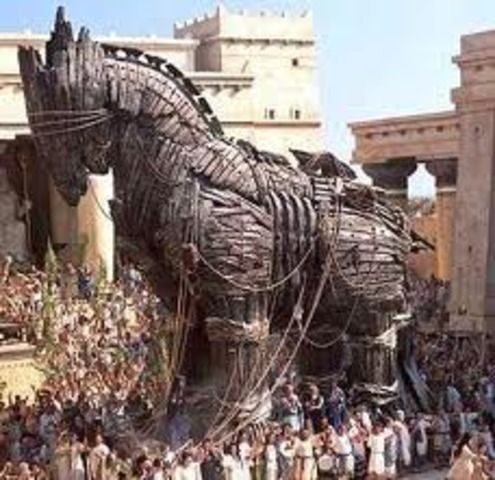
The ancient world continues to unveil its secrets, offering glimpses into legendary tales that have captivated civilizations for millennia. Among these treasures is the Mykonian Pithos, a remarkable artifact dating back to 700 BC, which bears witness to one of the most enduring legends of antiquity – the Trojan Horse. In this article, we delve into the historical significance of the Mykonian Pithos and its portrayal of the legendary Wooden Horse used to capture Troy.
The Mykonian Pithos: A Window into Ancient Mythology
Discovered over five decades ago during a well excavation on the island of Mykonos, the Mykonian Pithos is a testament to the rich cultural heritage of ancient Greece. This sizable relief pithos, or storage jar, served a dual purpose as a burial vase containing human remains and as a canvas for intricate artistic depictions. Its elaborate relief panels tell the story of the Capture of Troy, a saga immortalized in Greek mythology and later echoed in the works of renowned writers such as Euripides and Homer.
Depicting the Legendary Trojan Horse
At the heart of the Mykonian Pithos lies its most iconic depiction – the legendary Wooden Horse of Troy. Scene by scene, the relief panels vividly portray the descent of the Greek warriors from the Trojan Horse, a stratagem devised to infiltrate the walls of Troy and bring an end to the decade-long conflict. The imagery captures the tension and drama of the moment, with warriors emerging from the belly of the horse amidst chaotic scenes of battle and conquest.
Inspiring Literary Masterpieces
The imagery depicted on the Mykonian Pithos not only serves as a visual representation of the Trojan War but also inspired some of the greatest literary works of antiquity. Euripides’ tragedy, “The Trojan Women,” and Homer’s epic poem, “The Iliad,” draw upon the themes and motifs portrayed on the pithos, immortalizing the legendary tale of Troy for generations to come. From the anguish of captive women to the valor of Greek heroes, the Mykonian Pithos encapsulates the essence of this timeless narrative.
Connecting Mykonos to Ancient Legend
Beyond its artistic and literary significance, the Mykonian Pithos forges a tangible link between the island of Mykonos and the mythological landscape of ancient Greece. As one of the earliest Greek representations of the Trojan Horse, the pithos highlights the enduring legacy of the Trojan War within Greek culture and mythology.

Its discovery on the shores of Mykonos serves as a poignant reminder of the island’s rich history and its role in preserving ancient traditions and legends.
In Conclusion: A Testament to Myth and History
In conclusion, the Mykonian Pithos stands as a tangible testament to the enduring power of myth and history. Through its intricate reliefs and captivating imagery, this ancient artifact brings to life the legendary tale of the Trojan Horse, offering insights into the cultural heritage of ancient Greece. As a symbol of artistic expression and cultural identity, the Mykonian Pithos continues to fascinate scholars and enthusiasts alike, serving as a bridge between the past and the present, between myth and reality.





